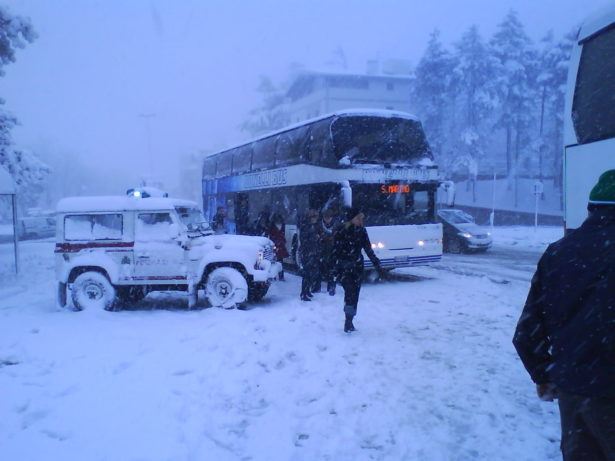No matter what time of year you drive in, there are major risks, particularly if you’re driving on interstates and highways. Not only is speed an issue on major roadways, but you’re also sharing the road with large trucks and buses which are struggling in winter conditions as well.
Just consider the fact that a fully-loaded truck is about 20 times as heavy as a car. The impact of a collision with a truck in winter weather can be devastating or deadly meaning that an auto insurance resource is vital.
So what if you combine these risks with wintry weather where roadways are slick, and visibility is minimal?
Unfortunately, it can be a recipe for disaster, but people frequently travel in the winter to see loved ones around the holidays, to go skiing and for other purposes.
If you’re traveling this winter and the conditions are less than ideal, how can you be safe?
Winterize Your Car
You may have heard of winterizing your home, but what about your car?
You should do the same. As winter approaches or you’re about to hit the roadways, think about doing the following to get your car ready to tackle winter conditions.
- As the temperatures go down, your battery power decreases. Make sure your battery is ready for winter and if needed, replace your old one.
- Make sure your brakes are in tip-top condition and do the same for your belts, wires, cables, and hoses.
- If you live somewhere very cold or you’re going to be driving somewhere that gets severe winter weather, think about installing winter tires. Winter tires are engineered to resist hardening that can happen in cold temperatures, so you’ll get better overall traction.
- Drops in temperature can also mean drops in tire pressure, so check and refill your tires.
- Winter wipers have a special type of rubber that can prevent ice accumulation on the blades, so depending on your travel plans, they’re worth considering.
Before you head out, clean your side-view mirrors and the external camera lenses of your car. Remove any ice or debris from your driving assistant features, and never leave your vehicle running in a garage or enclosed space.
You should make sure your exhaust pipes are clear of snow or anything else before you get into your car.
Your windshield wiper fluid should be full when you leave the house because a snowstorm can cause a lot of this liquid to be used up. You need a formula that’s meant for low temperatures.
Winter Emergency Kit
When you travel anywhere regardless of the weather or what time of year it is, you should always have an emergency kit with things like a first aid kit, food and water, and blankets.
In winter, you might want to add a snow shovel, broom, and ice scraper to that. You should also have a bag of something abrasive like kitty litter which can help if you get stuck in the snow, and you want flares or emergency markers.
Bring extra blankets in the winter, and a cell phone with a charger and any necessary medication.
Driving Tips
When it’s snowing or icy out, you want to slow down. You never know when there could be a patch of black ice ahead of you.
You should not only drive more slowly than you would ordinarily, but make sure you’re accelerating and decelerating slowly. If you hit the gas or brakes too hard when there’s winter weather, you might lose traction and ultimately control.
Typically you are advised to stay three to four seconds behind the car in front of you. In winter and especially when there’s snow or ice, extend this to six to eight seconds.
Don’t use cruise control when there’s winter weather, because it can cause an accident and you may lose focus if you depend on that feature.
When you’re going up hills, don’t try to power up them because it may cause your wheels to spin. Instead, you should try and build your momentum before you get to the hill, and then slow down when you’re at the top.
Never forget that bridges freeze first, and be cautious of exit ramps from highways because they might not get as much deicing.
If you do find yourself stranded, stay in your vehicle if possible. Let the fresh air into your car regularly and run your engine every ten minutes, as long as there is no snow in your exhaust pipe.
Finally, keep in mind that lower temperatures don’t always mean more precarious driving conditions. For example, it can be easier to drive when it’s zero degrees because you have more traction. Roads are actually more slippery at higher winter temperatures.

